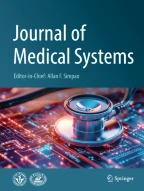Abstract
An automatic system for the diagnosis of lung cancer has been proposed in this manuscript. The proposed method is based on combination of genetic algorithm (GA) for the feature selection and newly proposed approach, namely the extreme learning machines (ELM) for the classification of lung cancer data. The dimension of the feature space is reduced by the GA in this scheme and the effective features are selected in this way. The data are then fed to a fuzzy inference system (FIS) which is trained by the fuzzy extreme learning machines approach. The results on real data indicate that the proposed system is very effective in the diagnosis of lung cancer and can be used for clinical applications.
Similar content being viewed by others
References
http://www.lungusa.org/lung-disease/lung-cancer/resources/facts-figures/lung-cancer-fact-sheet.html
Feng, F., Wu, Y., Wu, Y., Nie, G., Ni, R., The effect of artificial neural network model combined with six tumor markers in auxiliary diagnosis of lung cancer. J. Med. Syst. in press, 2011.
Polat, K., and Gunes, S., Priciples component analysis, fuzzy weighting pre-processing and artificial immune recognition system based diagnostic system for diagnosis of lung cancer. Expert Syst. Appl. 34:214–221, 2008.
Avci, E., A new expert system for diagnosis of lung cancer: GDA-LS_SVM. J. Med. Syst. in press, 2011.
Bhattacharya, M., and Das, A., Genetic algorithm based feature selection in a recognition scheme using adaptive neuro fuzzy techniques. Int J Comput, Commun Control V(4):458–468, 2010.
Siedlecki, W., and Sklansky, J., A note on genetic algorithms for large-scale feature selection. Pattern Recogn. Lett. 10(5):335–347, 1989.
Oh, I. S., Lee, J. S., and Moon, B. R., Hybrid genetic algorithms for feature selection. IEEE Trans. Pattern Anal. Mach. Intell. 26(11):1424–1437, 2004.
Handels, H., Ross, Th, Kreusch, J., Wolff, H. H., and Poppl, S. J., Feature selection for optimized skin tumor recognition using genetic algorithms. Artif. Intell. In Medicine 16(3):283–297, 1999.
Huang, G.-B., Ding, X., and Zhou, H., Optimization method based extreme learning machine for classification. Neurocomputing 74:155–163, 2010.
Huang, G.-B., Zhu, Q.-Y., and Siew, C.-K., Extreme learning machine: theory and applications. Neurocomputing 70:489–501, 2006.
Haykin, S., Neural networks- a comprehensive foundation, 2nd edition. Prentice-Hall, Upper Saddle River, 1998.
Rong, H.-J., Huang, G.-B., Saratchandran, P., and Sundararajan, N., On-line sequential fuzzy extreme learning machine for function approximation and classification problems. IEEE Trans. Syst., Man, Cybern.: Part B 39(4):1067–1072, 2009.
Takagi, T., and Sugeno, M., Fuzzy identification of systems and its applications for modeling and control. IEEE Trans. Syst., Man, Cybern. 15(1):116–132, 1985.
Frank, A., Asuncion, A., UCI machine learning repository [http://archive.ics.uci.edu/ml]. Irvine, CA: University of California, School of Information and Computer Science, 2010.
Hong, Z. Q., and Yang, J. Y., Optimal discriminant plane for a small number of samples and design method of classifier on the plane. Pattern Recognit 24(4):317–324, 1991.
Picard, R. R., and Cook, R. D., Cross-validation of regression models. J. Am. Stat. Assoc. 79:575–583, 1984.
Yu, L., Liu, H., Feature selection for high-dimensional data: a fast correlation-based filter solution. In Proceedings of the Twentieth Int. Conf. on Machine Learning (ICML-03), pp. 856–863, Washington, D.C., 2003.
Tan, P. J., Dowe, D. L., MML inference of oblique decision trees. In Australian Conf. on Artificial Intelligence, pp. 1082-1088, 2004.
Bostrom, H., Maximizing the Area under the ROC Curve using Incremental Rediced Error Pruning. In Proceedings of the ICML 2005 workshop on ROC analysis in Machine Learning, 2005.
Hendrickx, I., van den Bosch, A., Hybrid algorithms with instance-based classification. In: Proceedings of the 16th European Conf. on Machine Learning. Lecture Notes in Computer Science, 3720:158–169, 2005.
Badjio, F. E., Poulet, F., Dimension reduction for visual data mining. In Intl. Symp. On Applied Stochastic Models and Data Analysis (ASMDA-2005), 2005.
Author information
Authors and Affiliations
Corresponding author
Rights and permissions
About this article
Cite this article
Daliri, M.R. A Hybrid Automatic System for the Diagnosis of Lung Cancer Based on Genetic Algorithm and Fuzzy Extreme Learning Machines. J Med Syst 36, 1001–1005 (2012). https://doi.org/10.1007/s10916-011-9806-y
Received:
Accepted:
Published:
Issue Date:
DOI: https://doi.org/10.1007/s10916-011-9806-y
